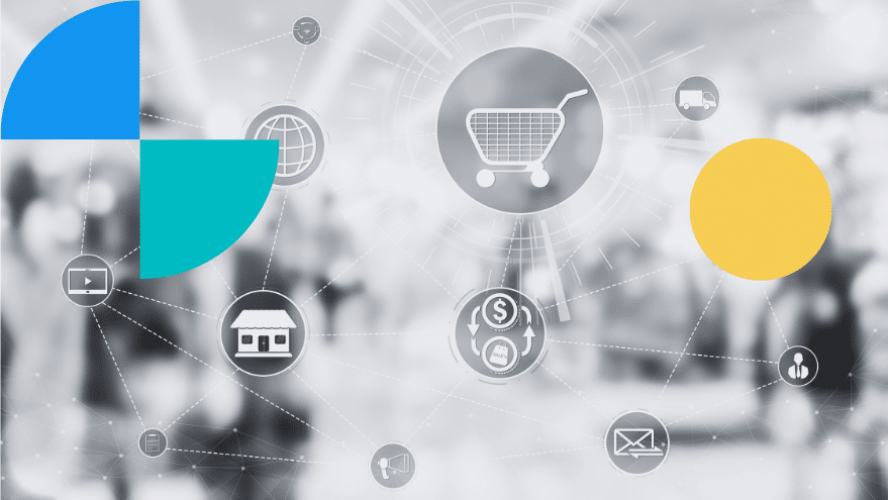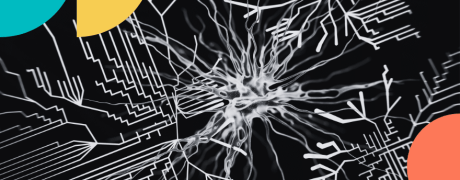Retail is bearing the brunt of the impact of digital tech. To stay competitive with newcomers that have digital baked-in from the outset, retail chains are focusing on omnichannel strategies to build the shopping experience of the future and support their growth. Beyond the quest for improved margins, they are rethinking their entire relationship with consumers. They are not just looking for incremental gains, but disruptive innovation, and so those first affected are their IT departments.
Consumers are now hyper-connected, so commercial contacts can occur several times using several points of interaction before an actual sale, including online stores, bricks-and-mortar outlets, customer review websites, social media and so on. In such circumstances, the impact for retail chains is clear: it is no longer possible to sell or communicate in one way on one channel without being careful to show consistency with all the others. The multi-channel we all know is accordingly dropped in favour of a shift to a single, omnichannel customer experience where the relationship with the consumer is seamless, regardless of the device or communication space being used.
IT departments in the retail sector have taken this fully on board, and are endeavouring to follow the acceleration in technological innovations offering the best possible experience whether in-store or online, such as web-to-store strategies, real-time retargeting at the sales outlet, augmented commerce, click & collect, and so on.
This has many consequences on the information system, the capacity for openness of which is a decisive factor in delivering a successful omnichannel strategy. The system needs to be able to analyse and exploit all the data related to consumers and products in real time, to meet their requirements as quickly as possible with the aim of supporting sales.

How process (BPM) and data (ESB) integration can create value for IT and business departments ?
An omnichannel strategy requires a unified understanding of all the channels
There can be no doubt that hyper-connected consumers exist. We spend longer and longer using our smartphones or tablets every day. These hours spent on the internet have major consequences for retail companies: almost all customers get information online before buying, either using comparison websites or reading reviews by previous buyers. Sales are faster now, and retailers must constantly monitor the consistency of their communications. Sending a promotion by email linking to a website might work, but customers will then have time to compare prices online, only to come into the bricks-and-mortar shop and ask for the promotional price anyway. Likewise e-reputation, where a watchful eye over consumer feedback is needed, especially on social media.
Consumers are therefore obliging retail chains to adopt omnichannel strategies, to put “continuous commerce” in place, and so shortening the distance between online and offline as Amazon Go has recently reminded us.
An omnichannel strategy consequently demands full knowledge of your customers. This requires a move towards an overall vision of the customer’s purchasing experience so as to build a comprehensive marketing database, including a history of products purchased, consumption behaviour, interactions on social media, etc. This makes it possible to build finely-tuned segmentations and to draw the right conclusions, meaning personalised messages and offers delivering increasingly high conversion rates can be sent to targeted recipients. The objective is obviously to provide the best possible customer experience, comprehensive and seamless, making for customer satisfaction and thus retention. Information continuity and de-siloing were already two of the challenges facing IT departments, and omnichannel strategies make them imperative.
IT departments’ central role in building an omnichannel customer journey and leveraging the value of data
Customer data is the beating heart of any omnichannel strategy. It is therefore essential to have a centralised single customer view to ensure any actions taken are relevant to the customers concerned. However, matters are not so simple when we know that this data is becoming more abundant, more complex and more varied every day, precisely because of this omnichannel strategy and the variety of data sources to be included, such as e-commerce, stores, CRM systems, social media, big data, etc.
To say nothing of product and promotions data, the real-time use of which is fundamental if retailers are to avoid causing “cognitive dissonance” in consumers. It is important to be able to leverage and coordinate product-line data in terms of both distribution/logistics (prices, promotions, stocks, etc.) and sales history. This entails integrating customer data with other data from ERP, PIM (Product Information Management) or other applications such as production management, etc.

ESB vs ETL ? The distinction between is no longer relevant relative to today’s business requirements.
To this can be added data and streams from the wider ecosystem. Data does not only travel around the retailer’s internal information system; its partners, suppliers, manufacturers, external marketplaces, logistics providers, etc. are all an integral part of the data chain. Mergers between retail companies and digital outfits are also giving rise to some thorny issues in integrating information systems.
The real challenge in building the shopping experience of the future and improving sales therefore lies in the ability to integrate data streams in real time in a way that is fully coherent with the processes connected to the various business applications in the information system.
Under these circumstances, IT departments become the conductor, orchestrating the best use of data for greater customisation and greater value for consumers. They are an integral part of any omnichannel strategy, including having a stronger impact on areas perhaps viewed as somewhat more distant, such as brand image and product appeal. Without data governance and an appropriate information system, how can geography-based targets be reached? How can product information be used profitably in omnichannel listings? How can members of sales teams provide bespoke advice to individual customers using their tablets? How can the customer experience be improved using smart chatbots on e-commerce websites?
An IS supported by an omnichannel integration platform is the key to success
All retail companies implementing an omnichannel strategy know that their information system is the lynchpin to transforming the organisation. This does not entail adding new applications to meet additional needs, but re-thinking data governance and cross-enterprise processes as a whole.
To make a success of this shift, an omnichannel process and data integration platform is definitely needed.
The first step is to accurately list all the various data sources that will contribute to constructing this omnichannel customer experience:
- Customer data from CRM, email platform and e-commerce website databases, mobile apps, ERP or other systems for customers’ purchase history online and in-store, plus their returns, deliveries, invoices, and so on.
- Product data to improve marketing and sales mechanisms and product distribution, should serve to populate the PIM (Product Information Management) system providing centralised management of all possible information about products.
Building all this data into a single omnichannel platform provides a control-tower function for marketing and sales promotion teams, thanks to the efficient and precise distribution of information along different communication channels (e-commerce website, online marketplaces, interactive catalogues, mobile apps, etc.). Moreover, this efficient distribution of data in an omnichannel environment is now made much easier thanks to the possibilities offered by an ESB (Enterprise Service Bus).
But be aware: the transformation of the retail sector has only just begun… IT departments’ role here is to select a data integration platform with enough upgradeability to handle future challenges, and not to implement a system that only meets the needs of the here and now.

Want to discuss interoperability challenges with an expert?





